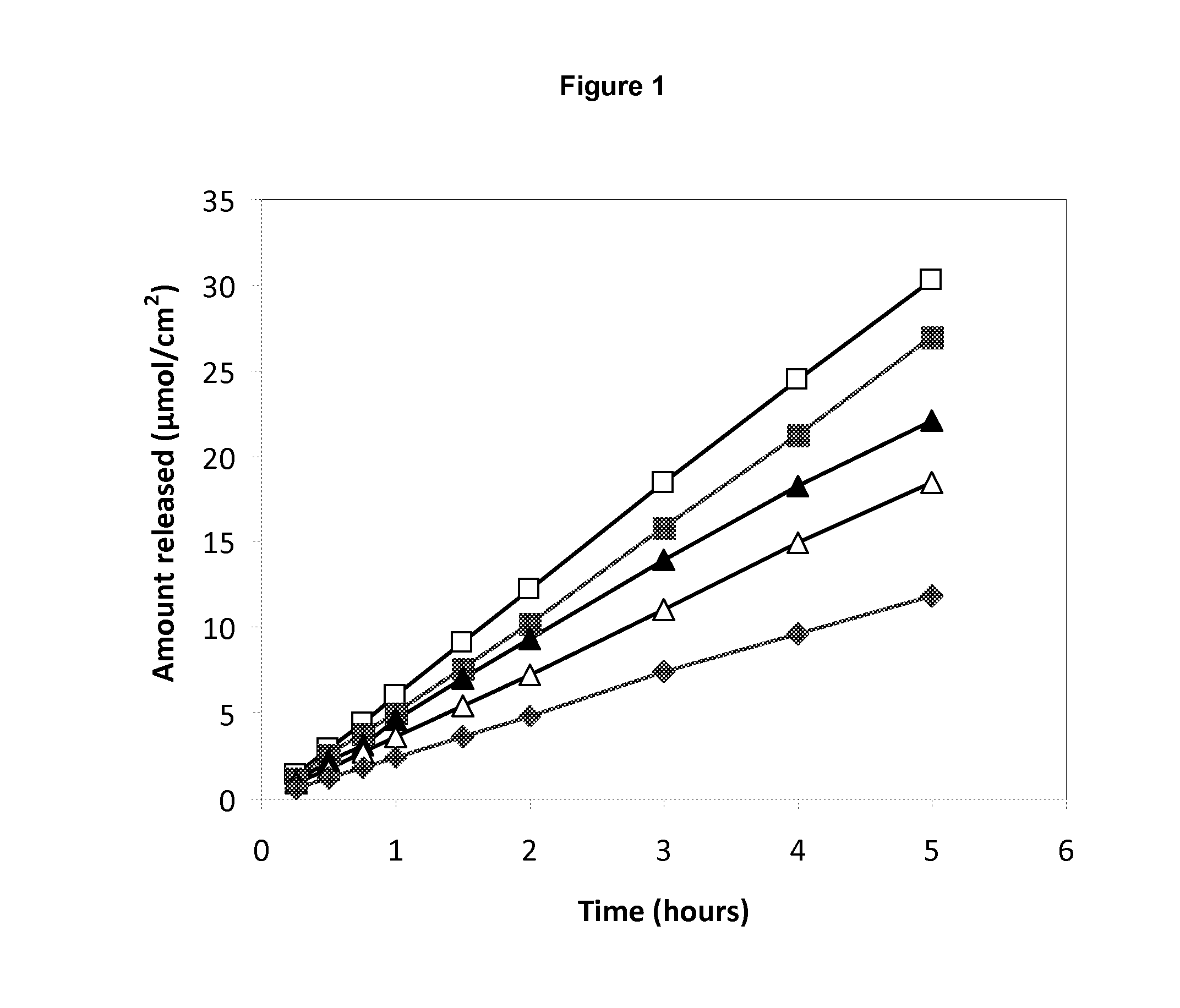Thermogelling anaesthetic compositions
a technology of compositions and anaesthetics, applied in the field of new pharmaceutical compositions, can solve the problems of poor solubility and stability, difficulty in finding stability and stable conditions, and acid form charged,
- Summary
- Abstract
- Description
- Claims
- Application Information
AI Technical Summary
Benefits of technology
Problems solved by technology
Method used
Image
Examples
example 1
Preparation of Lidocaine Compositions
[0057]Pharmaceutical compositions comprising the components according to Table 3 were prepared as described below.[0058]Step 1. Component I is dissolved in II or, in applicable cases, in II and III under gentle warming.[0059]Step 2. Components IV and V are dissolved in VI over night in a refrigerator, resulting into a clear slightly viscous solution.[0060]Step 3. The solution from step 2 is put to the solution from step 1 followed by a thorough mixing, resulting into an opalescent thick gel. The gel can be made slightly thinner with an appropriate amount of VI, which is compensated with a reduction of the amount VIII.[0061]Step 4. The pH of the gel is adjusted to 8 with VII.[0062]Step 5. Remaining amount of VIII is put to the mixture from step 4 in order to reach the final amount of preparation.
TABLE 3Formulations of lidocaineComponents12345ILidocaine5.005.005.005.005.00gIICremophor20.0023.0023.0025.0027.00gELIIIBenzyl1.001.002.000.000.00galcohol...
example 2
Preparation of a Prilocaine Formulation
[0064]A pharmaceutical composition comprising the components according to Table 4 was prepared as described below.[0065]Step 1. Components I and II are dissolved in III over night in a refrigerator, resulting in a clear slightly viscous solution.[0066]Step 2. Component IV is dissolved in the solution from step 1.[0067]Step 3. Components V and VI are added to the solution from step 2 followed by a thorough mixing, resulting in an opalescent mixture.[0068]Step 4. The pH of the composition is adjusted to 8 with VII.
TABLE 4Prilocaine formulationComponents% (w / w)IPoloxamer 1889.5IIPoloxamer 4078.6IIIWater34.5IVPrilocaine HCl5.0VBenzyl alcohol0.9VICremophor EL19.9VIINaOH 1M17.3
[0069]The formulation has thermoreversible gelling properties as a result of the presence of the poloxamers. No precipitation of the prilocaine was observed at the desired pH of 8 where prilocaine is mainly present in its active base form.
example 3
In-vitro Release of Local Anaesthetics from Pharmaceutical Compositions
[0070]Release of lidocaine and prilocaine from pharmaceutical compositions prepared according to Example 1 and Example 2 were measured overtime.
[0071]Results are presented in FIG. 1. A steady release of local anaesthetic could be observed from the different pharmaceutical preparations. The rate of release was related to the concentration of the local anaesthetic.
[0072]Although particular embodiments have been disclosed herein in detail, this has been done by way of example for purposes of illustration only, and is not intended to be limiting with respect to the scope of the appended claims that follow. In particular, it is contemplated by the inventor that various substitutions, alterations, and modifications may be made to the invention without departing from the spirit and scope of the invention as defined by the claims.
PUM
| Property | Measurement | Unit |
|---|---|---|
| pKa | aaaaa | aaaaa |
| temperature | aaaaa | aaaaa |
| temperature | aaaaa | aaaaa |
Abstract
Description
Claims
Application Information
 Login to View More
Login to View More - R&D
- Intellectual Property
- Life Sciences
- Materials
- Tech Scout
- Unparalleled Data Quality
- Higher Quality Content
- 60% Fewer Hallucinations
Browse by: Latest US Patents, China's latest patents, Technical Efficacy Thesaurus, Application Domain, Technology Topic, Popular Technical Reports.
© 2025 PatSnap. All rights reserved.Legal|Privacy policy|Modern Slavery Act Transparency Statement|Sitemap|About US| Contact US: help@patsnap.com

